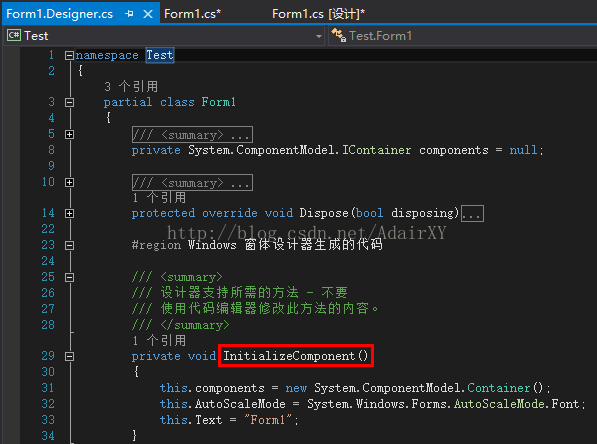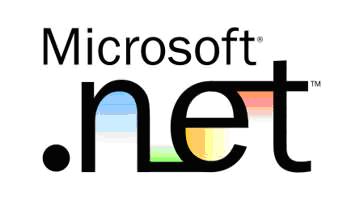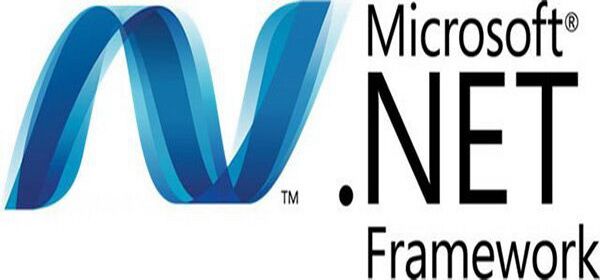10 recommended articles about form designers
Some instructions for .aspx files, .aspx.cs files and .aspx.designer.cs .aspx file: (page) writes the page code. What is stored is the page design code. Just put the code of each control, and the processing code is usually placed in the .cs file. .aspx.cs file: (code-behind page) to write class code. What is stored is program code. Generally stores queries related to database connections and databases. renew. Delete operations, as well as actions that occur after clicking each button, etc. .aspx.designer.cs file: writes page design code. Usually, the configuration information of controls in some page controls is stored, which is the registration control page. This thing is a code file generated by the form designer, and its function is to initialize the controls on the form. <%@ Page Language="C#" AutoEventWireup="true" CodeBehind="Document.aspx.cs&quo

#Introduction: .aspx file: (page) writes the page code. It stores the page design code. It only stores the code of each control. The processing code is generally placed in the .cs file. The .aspx.cs file: (code-behind page) stores program code. It generally stores queries related to database connections and database updates. Actions that occur after a button is clicked. The .aspx.designer.cs file: writes the page design code. It usually stores the configuration information of some controls in the page, which is generated by the form designer. Code file, the function is to control the form
2. Summary of commonly used asp.net skills

Introduction: vs2005 common shortcut keys Debugging shortcut keys F6: Generate solution Ctrl+F6: Generate current project F7: View code Shift+F7: View form designer F5 : Start debugging Ctrl+F5: Start execution (without debugging) Shift+F5: Stop debugging Ctrl+Shift+F5: Restart debugging F9: Switch breakpoints Ctrl+F9: Enable/stop breakpoints Ctrl+Shift+F9: Delete all breakpoints Click F10: Step by step Ctrl+F10
3. C# Introduction to the method of using DesignSurface to implement a simple form designer (picture and text)

Introduction: This article mainly introduces relevant information on how C# uses DesignSurface to implement a simple form designer. The article uses pictures, texts and examples. The code is introduced in detail and has certain reference value for everyone. Friends who need it can come and learn together.
The above is the detailed content of 10 recommended articles about form designers. For more information, please follow other related articles on the PHP Chinese website!

Hot AI Tools

Undresser.AI Undress
AI-powered app for creating realistic nude photos

AI Clothes Remover
Online AI tool for removing clothes from photos.

Undress AI Tool
Undress images for free

Clothoff.io
AI clothes remover

Video Face Swap
Swap faces in any video effortlessly with our completely free AI face swap tool!

Hot Article

Hot Tools

Notepad++7.3.1
Easy-to-use and free code editor

SublimeText3 Chinese version
Chinese version, very easy to use

Zend Studio 13.0.1
Powerful PHP integrated development environment

Dreamweaver CS6
Visual web development tools

SublimeText3 Mac version
God-level code editing software (SublimeText3)

Hot Topics
 1386
1386
 52
52
 What is the role of char in C strings
Apr 03, 2025 pm 03:15 PM
What is the role of char in C strings
Apr 03, 2025 pm 03:15 PM
In C, the char type is used in strings: 1. Store a single character; 2. Use an array to represent a string and end with a null terminator; 3. Operate through a string operation function; 4. Read or output a string from the keyboard.
 How to handle special characters in C language
Apr 03, 2025 pm 03:18 PM
How to handle special characters in C language
Apr 03, 2025 pm 03:18 PM
In C language, special characters are processed through escape sequences, such as: \n represents line breaks. \t means tab character. Use escape sequences or character constants to represent special characters, such as char c = '\n'. Note that the backslash needs to be escaped twice. Different platforms and compilers may have different escape sequences, please consult the documentation.
 How to use various symbols in C language
Apr 03, 2025 pm 04:48 PM
How to use various symbols in C language
Apr 03, 2025 pm 04:48 PM
The usage methods of symbols in C language cover arithmetic, assignment, conditions, logic, bit operators, etc. Arithmetic operators are used for basic mathematical operations, assignment operators are used for assignment and addition, subtraction, multiplication and division assignment, condition operators are used for different operations according to conditions, logical operators are used for logical operations, bit operators are used for bit-level operations, and special constants are used to represent null pointers, end-of-file markers, and non-numeric values.
 The difference between char and wchar_t in C language
Apr 03, 2025 pm 03:09 PM
The difference between char and wchar_t in C language
Apr 03, 2025 pm 03:09 PM
In C language, the main difference between char and wchar_t is character encoding: char uses ASCII or extends ASCII, wchar_t uses Unicode; char takes up 1-2 bytes, wchar_t takes up 2-4 bytes; char is suitable for English text, wchar_t is suitable for multilingual text; char is widely supported, wchar_t depends on whether the compiler and operating system support Unicode; char is limited in character range, wchar_t has a larger character range, and special functions are used for arithmetic operations.
 The difference between multithreading and asynchronous c#
Apr 03, 2025 pm 02:57 PM
The difference between multithreading and asynchronous c#
Apr 03, 2025 pm 02:57 PM
The difference between multithreading and asynchronous is that multithreading executes multiple threads at the same time, while asynchronously performs operations without blocking the current thread. Multithreading is used for compute-intensive tasks, while asynchronously is used for user interaction. The advantage of multi-threading is to improve computing performance, while the advantage of asynchronous is to not block UI threads. Choosing multithreading or asynchronous depends on the nature of the task: Computation-intensive tasks use multithreading, tasks that interact with external resources and need to keep UI responsiveness use asynchronous.
 How to convert char in C language
Apr 03, 2025 pm 03:21 PM
How to convert char in C language
Apr 03, 2025 pm 03:21 PM
In C language, char type conversion can be directly converted to another type by: casting: using casting characters. Automatic type conversion: When one type of data can accommodate another type of value, the compiler automatically converts it.
 What is the function of C language sum?
Apr 03, 2025 pm 02:21 PM
What is the function of C language sum?
Apr 03, 2025 pm 02:21 PM
There is no built-in sum function in C language, so it needs to be written by yourself. Sum can be achieved by traversing the array and accumulating elements: Loop version: Sum is calculated using for loop and array length. Pointer version: Use pointers to point to array elements, and efficient summing is achieved through self-increment pointers. Dynamically allocate array version: Dynamically allocate arrays and manage memory yourself, ensuring that allocated memory is freed to prevent memory leaks.
 How to use char array in C language
Apr 03, 2025 pm 03:24 PM
How to use char array in C language
Apr 03, 2025 pm 03:24 PM
The char array stores character sequences in C language and is declared as char array_name[size]. The access element is passed through the subscript operator, and the element ends with the null terminator '\0', which represents the end point of the string. The C language provides a variety of string manipulation functions, such as strlen(), strcpy(), strcat() and strcmp().




